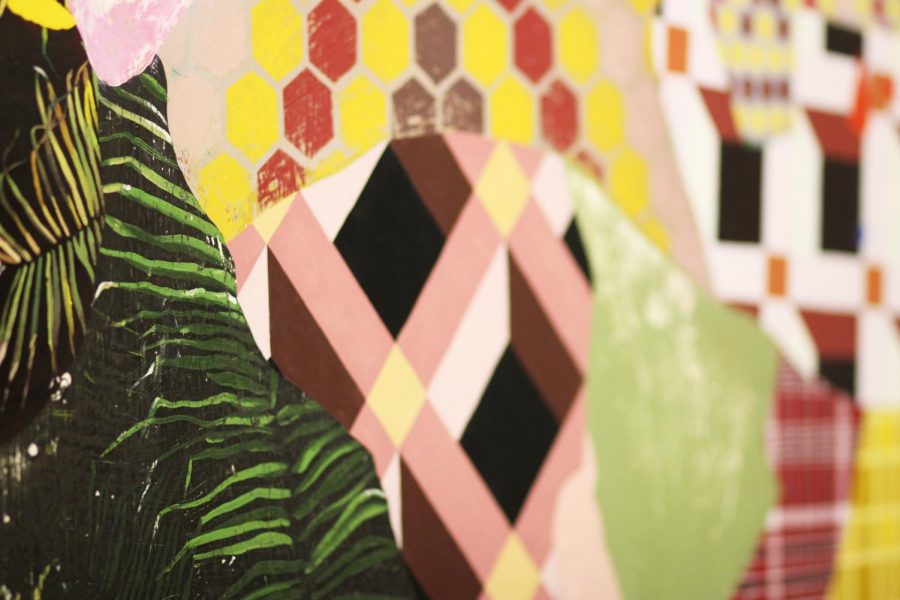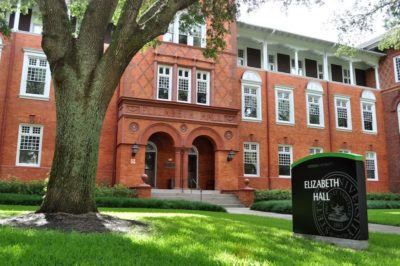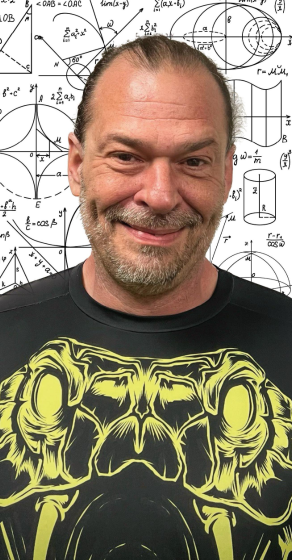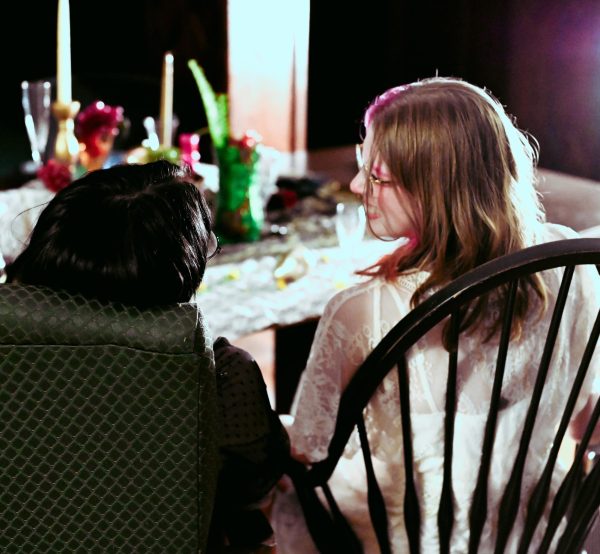Luca Molnar Faculty Focus Artist Piece
Artwork displayed at the Hand Art Center. Photography done by Natalie Bergeron.
Luca Molnar, Ph.D is an artist interested in questions rather than answers. An art professor at Stetson and the Homer and Dolly Hand Art Center’s faculty focus artist, she works to evoke a reaction in viewers instead of providing statements.
Her pieces, metaphorically based on man-made borders, are quiltlike designs made up of sources such as tile, wallpaper, fabric, nature, and more. In both paintings on display, areas of colorful designs sprawl across the canvas, the intersections creating winding lines throughout. Although filled with bright colors and commonplace designs, these works carry a thought-provoking chaos. Her goal is to make these beautiful, calm patterns in these paintings feel familiar to the viewer.
Before her most recent installations, such as the ones on display in the Homer and Dolly Hand Art Center, Dr. Molnar worked with silhouetted figures. These figures, sometimes broken up by background space, interact with each other in various colors and positions. Her work next became more abstract, and she came to the idea of depicting landscape from a bird’s-eye view. She loves “the simultaneous fluidity and rigidity of man-made borders” that work together to break up space and finds this duality representative of what she works to explore.
Dr. Molnar has long been interested in representing domestic themes. The household serves as the setting for shifting power structures, domestic borders, and thriving history. There is a palpable nostalgia and comfort brough by designs and patterns we see in everyday life in kitchens, bathrooms, and other spaces where women work often invisibly. She juxtaposes soft and hard edges as well as complex and simple patterns to reflect the battle between seemingly calm and gentle domestic relationships with the chaos that develops inside the home. The emotions and disturbance represented by clashing patterns and borders, or in some areas lack thereof, are meant to expose the dynamics of every relationship.
“I’m interested in how these patterns, each loaded with associative meaning, can coexist in a space. Is their coexistence comfortable? Fraught? Tense? Distant? What do these conditions show us about our own relationships?” Dr. Molnar said.
Poems and prose on the walls around her pieces complement this sentiment, describing abusive relationships and expressions of power between men and women. One such set of writings responds to a gruesome day in 1929 in Hungary, when 34 women were arrested for poisoning their husbands and male relatives with arsenic. The depth of this poetry as well as the other writings surrounding Dr. Molnar’s paintings draw the viewer’s attention poignantly to the combatting atmosphere of her works.
“My hope for [my] work is to evoke multitudinous reactions in the viewer,” she said, and this goal has proven itself successful. Indeed, these paintings create many questions for viewers about their own relationships and how power is balanced in their lives.
In the future, Dr. Molnar would like to expand on her understanding of color as well as increase the size of her installations. Her work will be available in the Hand-Art Center until Oct. 14. Go and see it soon!
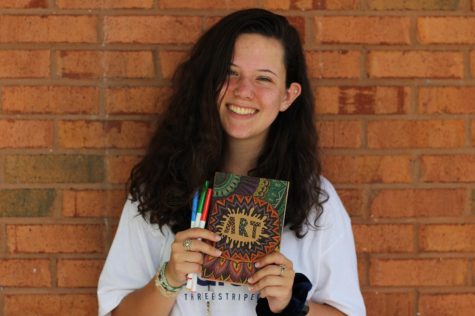
Julia Gray is the social media director for all of Hatter Network (follow on Instagram, Twitter, and Facebook @hatternetwork!!) as well as a writer, designer,...

Natalie Bergeron is the Multimedia Director for Hatter Network. She is an environmental science major with a lively passion for plants. She loves music...


